Wikipedia:Picture of the day/November 2008
|
Featured picture tools: |
These featured pictures, as scheduled below, appeared as the picture of the day (POTD) on the English Wikipedia's Main Page in November 2008. Individual sections for each day on this page can be linked to with the day number as the anchor name (e.g. [[Wikipedia:Picture of the day/November 2008#1]] for November 1).
You can add an automatically updating POTD template to your user page using {{Pic of the day}} (version with blurb) or {{POTD}} (version without blurb). For instructions on how to make custom POTD layouts, see Wikipedia:Picture of the day.
November 1

|
The Four-spotted Chaser or Four-spotted Skimmer (Libellula quadrimaculata) is a common dragonfly species, so named for the characteristic four spots on the wings. They are found throughout Europe, Asia, and North America. Photo credit: Daniel Schwen
Recently featured:
|
November 2

|
A map of Antelope Island State Park, which covers the entirety of Antelope Island, an island in the southeastern portion of the Great Salt Lake in the U.S. state of Utah. The park was established in 1981 as part of the Utah State Parks system. The island is accessible from either Syracuse via a 7-mile (11 km) causeway (to the northeast) or from Salt Lake City at the southern end. Map credit: Justin Morris
Recently featured:
|
November 3

|
|
The night skyline of Hong Kong, Victoria Harbour and Kowloon, as seen from Victoria Peak, the tallest mountain on Hong Kong Island. Hong Kong is located on China's south coast on the Pearl River Delta, and borders Guangdong province in the north and faces the South China Sea in the east, west and south. It has a population of 6.9 million people, and is one of the most densely populated areas in the world. Photo credit: David Iliff
Recently featured:
|
November 4

|
A lithograph from 1876, showing the seals of the then-47 U.S. states and territories as well as the District of Columbia. Some of these seals have changed since this image was created. Image credit: A.J. Connell Litho.
Recently featured:
|
November 5

|
|
The anisotropies in the cosmic microwave background (CMB) as seen by NASA's Wilkinson Microwave Anisotropy Probe after five years of observations, projected from the full sky using the Mollweide projection. The CMB consists of electromagnetic radiation in the microwave region which pervades the universe. Most cosmologists consider this radiation to be the best known evidence for the Big Bang. Image credit: NASA / the WMAP Science Team
Recently featured:
|
November 6

|
The Trevi Fountain, located in the rione of Trevi in Rome, Italy, is the city's largest and most ambitious Baroque fountain. Standing 25.9 meters (85 feet) high and 19.8 meters (65 feet) wide, it was commissioned in 1730 and completed in 1762, with restoration work done in 1998. Photo credit: David Iliff |
November 7

|
|
A portion of Glen Canyon, just downstream of Glen Canyon Dam on the Colorado River in Arizona, United States. Photo credit: Christian Mehlführer
Recently featured:
|
November 8

|
David Herold, one of the conspirators in the assassination of U.S. President Abraham Lincoln, photographed at the Washington Navy Yard after his arrest in 1865. Herold assisted John Wilkes Booth to the home of Dr. Samuel Mudd, where Booth's broken leg (sustained after jumping from the balcony of Ford's Theatre) was set. He remained with Booth and continually aided him until the authorities caught up with them. Herold surrendered to the police, but Booth refused to lay down his arms and was shot dead. Herold was later hanged for his role in the plot. Photo credit: Alexander Gardner
Recently featured:
|
November 9

|
The Bicoloured Antbird (Gymnopithys leucaspis) is a species of bird in the Thamnophilidae family. It is found in Brazil, Colombia, Costa Rica, Ecuador, Honduras, Nicaragua, Panama, and Peru. Its natural habitat is subtropical or tropical moist lowland forests. Photo credit: Mdf
Recently featured:
|
November 10

|
A male syrphid fly (Eristalinus taeniops) using its long proboscis to forage nectar from a Common Hawkweed flower. The eyes coming together at the top of the head (holoptic eyes) is typical of syrphid males. Photo credit: Joaquim Alves Gaspar
Recently featured:
|
November 11

|
"The Trumpet Calls", a recruitment poster for the Australian Army in World War I. When the United Kingdom declared war on Germany, Australia followed without hesitation. This was considered to be expected by the Australian public, because of the very large number of British-born citizens and first generation Anglo-Australians at the time. A total of 331,814 Australians were sent overseas to serve as part of the Australian Imperial Force with a casualty rate (killed or wounded) of 64%. Artist: Norman Lindsay
Recently featured:
|
November 12

|
United States Marines refuel a V-22 Osprey before a night mission in central Iraq. Ten Ospreys were assigned to Squadron VMM-263 in 2007 and deployed to Iraq, the Osprey's first combat deployment. Photo credit: Chief Petty Officer Joe Kane, U.S. Navy
Recently featured:
|
November 13
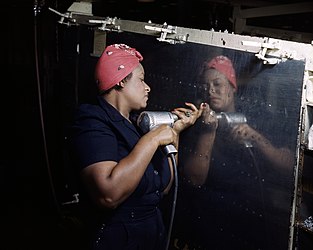
|
A real-life "Rosie the Riveter" operating a hand drill at a Vultee Aircraft factory, Nashville, Tennessee, working on an A-31 Vengeance dive bomber in 1943. "Rosie" was a cultural icon of the United States, representing the six million women who entered the workforce for the first time during World War II Photo credit: Alfred T. Palmer, OWI
Recently featured:
|
November 14
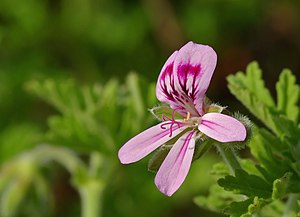
|
The Rose Geranium (Pelargonium graveolens) is a plant indigenous to various parts of southern Africa, and in particular South Africa. This specific species has great importance in the perfume industry. Its cultivars have a wide variety of smells, including rose, citrus, mint, coconut and nutmeg, as well as various fruits. Photo credit: Laitche
Recently featured:
|
November 15
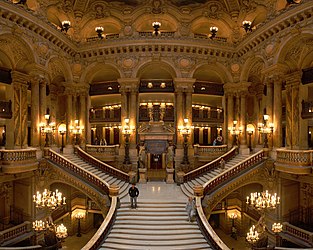
|
The Grand Staircase of the Palais Garnier, a 2,200-seat opera house in Paris, France. A grand landmark designed by Charles Garnier in the Neo-Baroque style, it is regarded as one of the architectural masterpieces of its time. The building was completed in 1874 as a replacement for the Théâtre de l'Académie Royale de Musique, which had been destroyed in a fire the year before. Photo credit: Benh Lieu Song
Recently featured:
|
November 16
|
A 1909 panorama of Tulsa, Oklahoma. Tulsa was first settled during the 1830s by the Creek Native American tribe. Shortly before Oklahoma's statehood on November 16, 1907, oil was discovered nearby and the city played a major role as one of the most important hubs for the American oil industry, eventually giving the city the nickname "Oil Capital of the World". Photo credit: Clarence Jack
Recently featured:
|
November 17

|
General Abner Doubleday of the Union Army during the American Civil War. He fired the first shot in defense of Fort Sumter, the opening battle of the war, and had a pivotal role in the early fighting at the Battle of Gettysburg. After the war, he patented the cable car railway of San Francisco, California, which still runs to this day. His most lasting claim to fame is the popular myth that he invented baseball, which has been debunked by almost all sports historians. Moreover, Doubleday himself never made such a claim. Photo credit: Mathew Brady or Levin Corbin Handy
Recently featured:
|
November 18
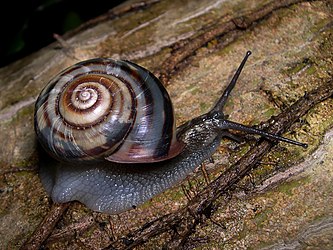
|
Euhadra peliomphala is a land snail endemic to Japan. The species exhibits exceptional geographical variation in its mitochondrial DNA. Photo credit: Takahashi
Recently featured:
|
November 19
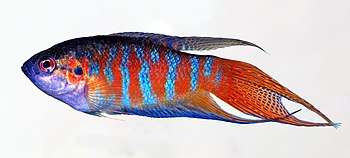
|
The paradise fish (Macropodus opercularis) are small freshwater labyrinth fish found in ditches and paddy fields in East Asia, ranging from the Korean Peninsula to Northern Vietnam, popular within the aquarium trade. Photo credit: André Karwath
Recently featured:
|
November 20

|
A poster for the United States National Park Service, showing a deer drinking from a stream in the forest. This was one of more than 200,000 works created as part of the Federal Art Project, which was the visual arts arm of the Great Depression-era New Deal WPA Federal One program. FAP artists created posters, murals and paintings; some of which stand among the most significant pieces of public art in the country. Poster credit: Frank S. Nicholson
Recently featured:
|
November 21

|
Astronaut Eugene Cernan makes a short test drive of the lunar rover (officially, Lunar Roving Vehicle or LRV) during the early part of the first Apollo 17 extravehicular activity. The LRV was only used in the last three Apollo missions, but it performed without any major problems and allowed the astronauts to cover far more ground than in previous missions. All three LRVs were abandoned on the Moon. Photo credit: Harrison Schmitt
Recently featured:
|
November 22

|
A schematic of the two types of liquid metal fast breeder reactor (LMFBR), a fast neutron reactor designed to breed fuel by producing more fissile material than it consumes. FBRs are used in nuclear power plants to produce nuclear power from nuclear fuel. LMFBRs are cooled by liquid sodium, but other metals have been used in the past.
Recently featured:
|
November 23

|
The Albert Memorial, a monument to Prince Albert found in Kensington Gardens, London, England, as seen from the south side. Directly to the north of the Royal Albert Hall. It was commissioned by Queen Victoria of the United Kingdom and designed by Sir George Gilbert Scott in the Gothic revival style. Opened in 1872, the memorial is 176 feet (54 m) tall, took over ten years to complete, and cost £120,000. Photo credit: David Iliff
Recently featured:
|
November 24

|
The tomb of Brother André, found in Saint Joseph's Oratory, a Roman Catholic basilica on the northern slope of Mount Royal in Montreal, Quebec, Canada. In 1904, Brother André began the construction of a small chapel on the side of the mountain near College Notre-Dame, which was replaced by a larger church in 1917 and the current basilica in 1967, which is dedicated to Saint Joseph, to whom Brother André credited all his reported miracles. These were mostly related to some kind of healing power, and many pilgrims (handicapped, blind, ill, etc.) were allegedly healed. Pope John Paul II deemed the miracles to be authentic and beatified Brother André in 1982. Photo credit: Alain Carpentier
Recently featured:
|
November 25

|
The Eastern Imperial Eagle (Aquila heliaca) is a bird of prey from the Accipitridae family. It is a close relative to the Spanish Imperial Eagle and very similar to the Golden Eagle, but a little smaller and less powerful. The species can be found in Southeast Europe, West and Central Asia, but has nearly vanished from much of its former distribution area of Hungary and Austria. Photo credit: AngMo
Recently featured:
|
November 26

|
The Trinity nuclear test explosion, .016 seconds after detonation. The fireball is about 200 metres (700 ft) wide. Conducted by the United States on July 16, 1945, at a location 35 miles (56 km) southeast of Socorro, New Mexico, on what is now White Sands Missile Range, Trinity was the first test of technology for a nuclear weapon. Photo credit: Berlyn Brixner
Recently featured:
|
November 27

|
|
A springtime view of the Bogong High Plains, a section of the Alpine National Park in the Australian state of Victoria, from the west, as seen from Mount Feathertop. This area forms part of Australia's Great Dividing Range and in winter is one of the largest snow covered areas in the country. It is popular for both summer and winter time activities. Photo credit: Benjamint444
Recently featured:
|
November 28

|
The national flower of India, Nelumbo nucifera is known by a number of common names, including Indian lotus, sacred lotus, bean of India, and sacred water-lily. This plant is an aquatic perennial, though under favorable conditions its seeds may remain viable for many years. Photo credit: Peripitus
Recently featured:
|
November 29

|
A frontal view of a bee of the Anthophora genus. This is one of the largest in the family Apidae, with over 450 species worldwide in 14 different subgenera. All species are solitary, though many nest in large aggregations. Photo credit: Joaquim Alves Gaspar
Recently featured:
|
November 30

|
Louis Brandeis in 1916, the year he was appointed to the Supreme Court of the United States by President Woodrow Wilson. Brandeis wrote the landmark Brandeis Brief, which was the first legal brief in United States legal history to incorporate analysis of factual data, rather than simply arguing legal theory. He would become one of the most influential and respected Supreme Court Justices in United States history. His votes and opinions envisioned the greater protections for individual rights and greater flexibility for government in economic regulation that would prevail in later courts. Photo credit: Harris & Ewing
Recently featured:
|
Picture of the day archives and future dates

